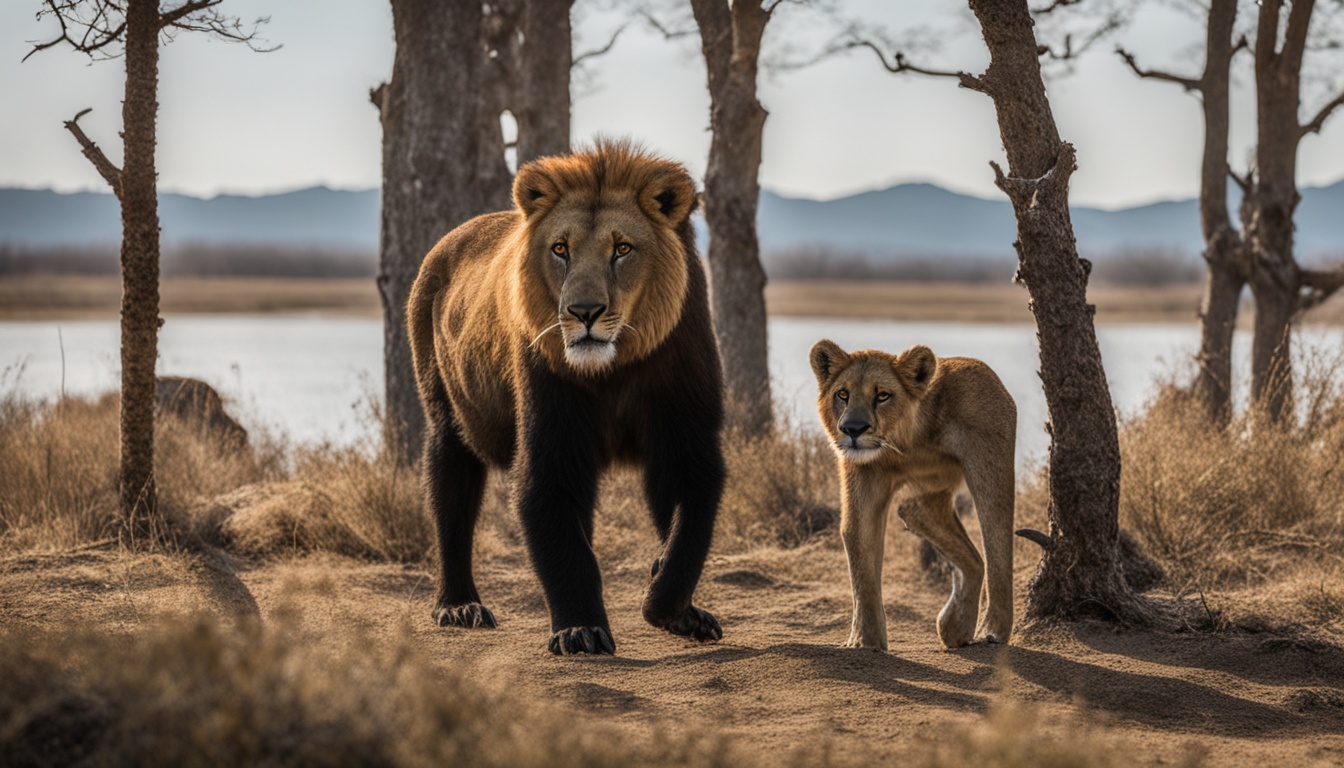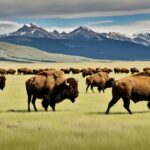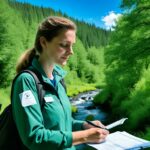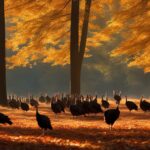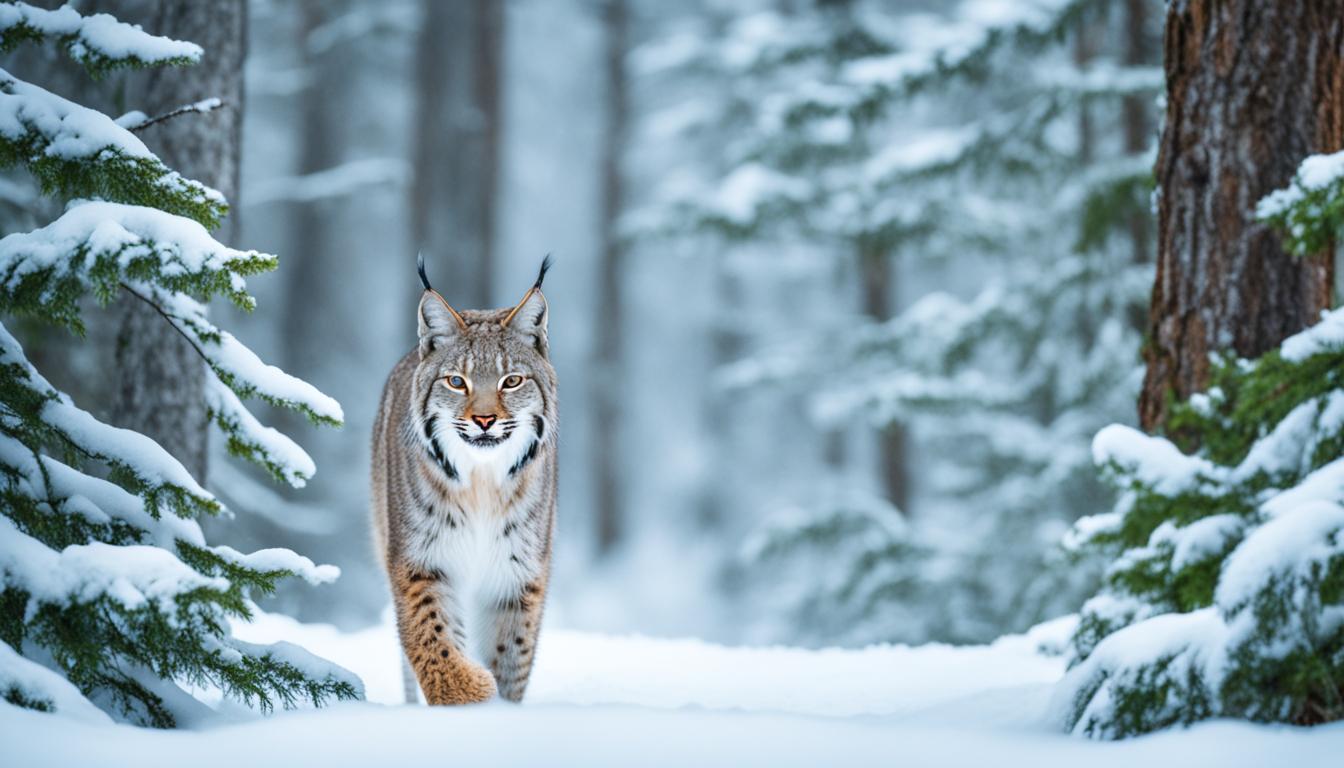Ever thought about how to watch wildlife safely? It’s thrilling in the USA but you need to be careful. Show respect by understanding their needs and keeping your distance.
To stay safe while watching animals, always follow the rules, and keep your space. Don’t scare or feed them. Also, make sure you keep your food and trash away. This helps keep the animals wild and healthy. Know about the animals you want to see. This will help you enjoy nature responsibly.
Watching animals the right way is not just fun, it’s helpful. It keeps their homes safe. Learn how to visit wildlife spots safely. This way, you help protect both yourself and the amazing animals you see.
Preparation Before Observing Wildlife
Getting ready for a wildlife observation journey is vital for a secure and fun interaction with animals. It’s important to follow wildlife observation rules, understand laws, and know how animals act. This makes your adventure more enjoyable and safe. Here’s what you should prepare before you go out.
Know the Guidelines and Legal Requirements
Start by learning the protected areas’ rules and legal protections like the Marine Mammal Protection Act. Places like parks and refuges set rules to protect the animals and their homes. Knowing these wildlife observation guidelines is key to keeping you and the animals safe during your visit.
Research Wildlife Behavior and Habits
Knowing when and where wildlife appears makes your experience richer. Learn about their favorite places and times to eat. This helps you watch them without bothering or scaring them.
Gather Necessary Equipment
Bring binoculars or a spotting scope for observing from a distance. Think about your pets too and whether they’re allowed, including any needed shots. The right gear lets you enjoy watching wildlife while staying safe and not disturbing.
Maintaining a Safe Distance from Wildlife
Keeping a safe distance from wildlife is key. This ensures your safety and the animals’ well-being. When watching animals, it’s vital to be careful.
Recommended Minimum Distances
Parks advise staying at least 25 yards away from most animals. For predators, keep 100 yards. By following these guidelines, you help keep the animals safe and stress-free.
Using Binoculars and Zoom Lenses
Using binoculars or a zoom lens lets you see animals up close. This is a safe way to watch them. It keeps you at the right distance. If an animal seems unfriendly, step back to give more space.
Respecting Wildlife and Their Habitat
When we watch wildlife, it’s key to not bother them. Animals get stressed and might even get hurt by us being too close. Stick to the wildlife observation safety tips. This way, we watch animals without causing them harm and help keep them safe.
Importance of Avoiding Disturbance
Bothering animals is not just wrong; it’s bad for their health. If you see them acting off, like running away or making loud noises, back off. It’s best to stay on designated paths and avoid mimicking their sounds. This helps keep them calm and safe.
Understanding Wildlife Behavior Signs
It’s important to know what animals do when they are distressed. Some signs include birds bobbing their heads or animal parents leaving their babies alone. Knowing these signs and what they mean helps you act in a way that’s good for everyone. This includes both you and the animals.
Caring for wildlife and where they live is rewarding. It not only adds to your experience but also keeps nature in balance. By following the wildlife observation safety tips, you’re doing your part to protect these amazing animals.
| Animal Behavior | Significance | Recommended Action |
|---|---|---|
| Fidgeting | Sign of discomfort or annoyance | Move away quietly |
| Fleeing | High stress level | Cease observation immediately |
| Head-bobbing in birds | Increased alertness, potential threat | Keep a greater distance |
| Female animals leaving young | Perceived danger, abandonment risk | Withdraw to a safe introductory distance |
Safe Wildlife Photography Techniques
To capture amazing wildlife photos safely, you need the right skills and gear. Adhering to top practices allows you to take great shots. You won’t bother the animals or risk your own safety.
Using a Telephoto Lens
A telephoto lens is a key tool for staying safe while photographing wildlife. It lets you take close-up shots from a safe distance. This means you won’t frighten the animals while getting detailed images.
Lighting and Timing for Best Shots
Choosing the right light and time is crucial for beautiful wildlife photos. The best times are early morning or late afternoon. Animals are most active then, and the light is gentle. This leads to high-quality, natural photos.
Use the right timing, light, and techniques for safe wildlife photography. It improves your photos and protects the animals. This way, we can enjoy nature’s beauty while keeping it safe for the future.
Best Practices for Wildlife Sightings
Watching animals can be very exciting, but it’s important to stay safe and keep wildlife safe too. By following good wildlife viewing etiquette, you make the most of your time and help wildlife and their homes.
Always keep a safe distance from animals. Never try to feed them or touch them. Watching them quietly from afar is best. It shows you respect their space.
Remember to check for wildlife observation guidelines at parks and refuges. These rules help keep everyone safe. They also make sure the animals stay wild and don’t rely on people for food.
- Avoid encroaching on the comfort zone of animals.
- Refrain from feeding or touching wildlife.
- Quietly observe natural behaviors.
- Follow guidelines set by wildlife refuges or parks.
Following these tips makes the place better for animals and visitors. It also helps future generations see wildlife as you do now. Adhere to wildlife viewing etiquette and wildlife observation guidelines for great, responsible animal encounters.
Storing Food and Disposing of Trash Properly
Proper food and trash management are key in staying safe when observing wildlife. By keeping food and trash in check, we protect ourselves and animals. This helps animals stay true to their natural ways, providing a safer view for everyone.
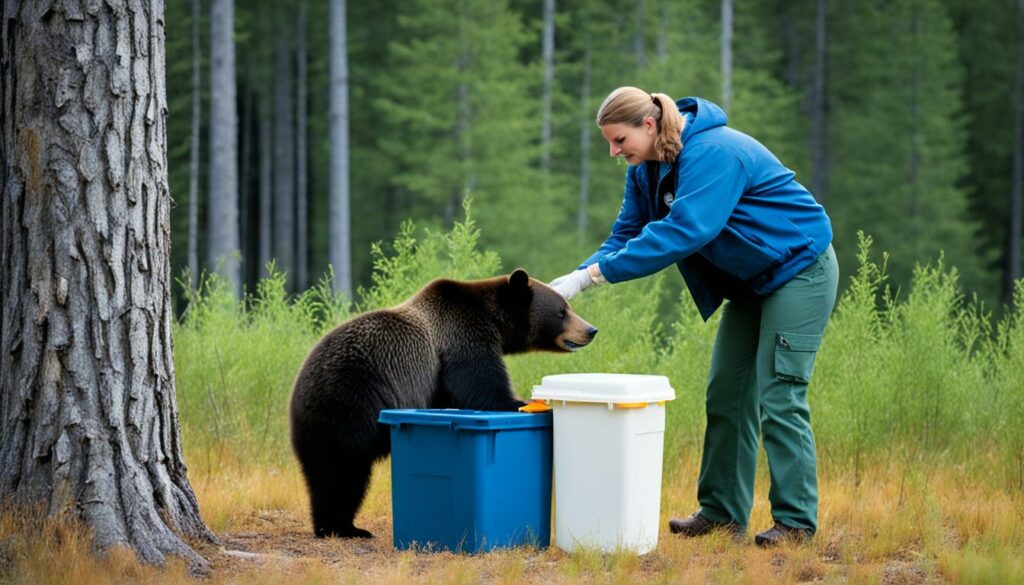
Preventing Wildlife from Accessing Food
It’s important to keep animals away from our food. Using containers that animals can’t open helps. This way, they won’t learn to rely on our food. It also helps keep the ecosystem in balance.
Risks of Feeding Wildlife
Feeding wild animals can be dangerous for both them and us. They might become aggressive and expect food from people. Human food can also make them sick. Always avoid feeding animals or leaving food behind. And remember to clean up well after outdoor eating.
Observing Marine Wildlife Responsibly
Observing marine wildlife comes with important rules. These help protect the ocean and its creatures. By watching carefully, you play a part in keeping marine ecosystems healthy.
Guidelines for Marine Mammals
Marine mammals need space and respect. U.S. law, like the Marine Mammal Protection Act, sets rules for watching them. Keep your distance to let animals act naturally.
If you see animals acting scared, like swimming away fast or making loud noises, it’s time to move further away. Your goal is to watch without causing stress.
Protecting Sea Turtles and Birds
Sea turtles and birds need our care too. Don’t get too close to where they nest, eat, or rest. Following set distances and looking out for signs like them moving off can help keep them safe.
Ensuring Your Safety in Wildlife Areas
In the USA, it’s important to understand wildlife can be unpredictable. They might hurt you if you get too close or spook them. To enjoy watching wildlife safely and protect yourself, always stay far away. Never feed or touch them. Following these rules keeps you safe and helps the animals too.
Be careful on roads in wildlife areas. There’s a big risk of animals running in front of your car, especially deer. Drive slower and keep your eyes peeled. This makes the road safer for you and the wildlife. Safe driving can help avoid accidents in places with lots of animals.
Knowing when an animal is sick or distressed from a distance is key for your safety and theirs. If you see an animal acting strange or looking hurt, keep your distance. This protects both you and the animal. Tell park authorities about what you saw. It helps keep the wildlife and people safe.

